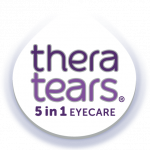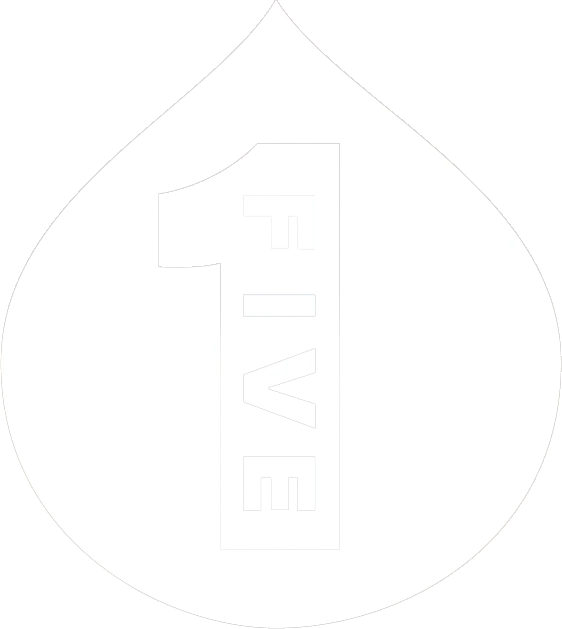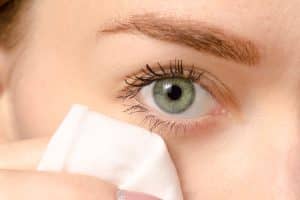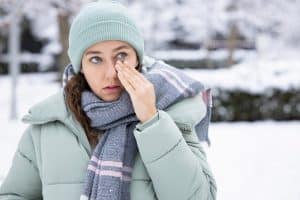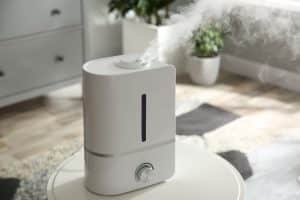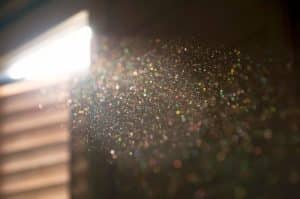Would you know how to safely wash out your eye if something got in it? A good understanding of how to use an eye wash can make all the difference in protecting your eyes from harm.
After all, your eyes are sensitive and vulnerable, and they’re easily exposed to things like dust, allergens and hazardous substances. Whether you work with chemicals, spend time outdoors or simply experience eye discomfort from time to time, knowing how to use an eye wash correctly can offer relief and prevent eye damage.
Below, we explain what eye washes are and how to use them.
How to use eye washes
Eye wash is an important part of any household or workplace first aid kit. Often made up of saline or PH-balancing substances,[1] these solutions are useful for flushing out the eyes when you’re on the go, at work or at home. It’s important to follow the instructions provided with your eye wash to ensure proper and effective treatment.
Using eye drops can also help to refresh eyes when they’re irritated by things like dust or pollen.[2] Formulated with gentle preservatives and containing Euphrasia to relieve eye irritation and redness and hyaluronic acid to lubricate the eyes, TheraTears® Irritation and Redness Eye Drops can be beneficial in such circumstances.
Here’s a quick guide to using eye washes in two common scenarios.
Objects in the eye
Getting a foreign object, like dust or dirt in your eyes, can be very uncomfortable, but this type of minor eye injury will usually get better on its own.[3] You can help by following the below instructions:
- Wash your hands thoroughly with soap and water to avoid introducing germs to your eyes.[5]
- Remove contact lenses if worn.
- Examine your eye to identify any foreign object. You can do this by opening the affected eye very wide, pulling your lower lid down and looking up into a mirror and then lifting your upper lid up and looking down into a mirror.[6]
- If your eye hasn’t been pierced and you have no other symptoms, such as vision changes, bleeding, a headache or light sensitivity, you can begin irrigation. You should always refer to the instructions for use on your eye wash first.
- Check your eye wash is sterile by making sure the bottle is sealed and the product is still within its expiration date.[1]
- Tilt your head back and pour the recommended amount of eye wash over the affected eye, ensuring the solution runs away from the other eye.[1]
- Repeat the last step until the contamination has been removed.
It’s important to note that if your eye has been pierced by a sharp object or has been hit by something travelling at high speed, or you have other symptoms, such as bleeding or vision changes, you should go to A&E or call 999.[3] You should also take care not to rub your eyes and not attempt to remove embedded objects to prevent further damage.[3] You should always seek advice from a healthcare professional if you’re in any doubt.
Chemicals in the eye
If you get chemicals in your eyes, you should seek care from an eye specialist or call 999 straight away.[7] It’s important to take immediate action to prevent serious injury. Early irrigation is vital to reduce the length of chemical exposure.[4] To limit further damage, you should avoid rubbing the eye and not introduce anything aside from water or saline rinse to the eye.[7] You should also wear sunglasses if possible to reduce light sensitivity.[7] To irrigate the eye, you should follow the below steps as soon as possible:[7]
- Clean your hands to prevent further chemical contamination to the eyes.[7]
- Remove contact lenses if worn.
- Sit in a reclined position.
- Ensure your eye wash is within its expiration date.[1]
- Start irrigating the eye immediately by pouring the recommended amount of eye wash over the affected eye, taking care to make sure the water doesn’t run into the other eye.
- Cover the eye and seek emergency care by going to A&E or calling 999.
- If possible, identify the chemical that has caused the injury so you can tell your healthcare provider and check the solution’s Control of Substances Hazardous to Health Regulations (COSHH) data sheet. This helps healthcare professionals to get you the best care specific to the chemical you’ve been exposed to.
Resources:
[1] – https://www.firstaid.co.uk/eye-wash-and-eye-baths-a-guide-to-flushing-your-eye/
[2] – https://www.nhs.uk/conditions/dry-eyes/
[3] – https://www.nhs.uk/conditions/eye-injuries
[6] – https://www.mayoclinic.org/first-aid/first-aid-eye-emergency/basics/art-20056647
[7] – https://www.mayoclinic.org/first-aid/first-aid-eye-emergency/basics/art-20056647
